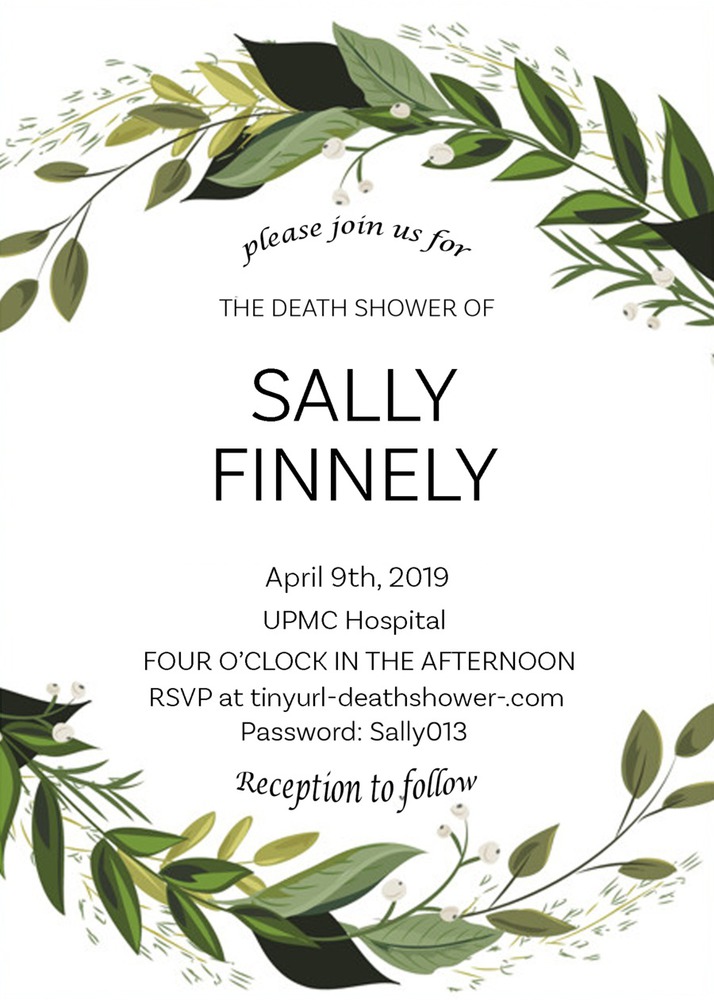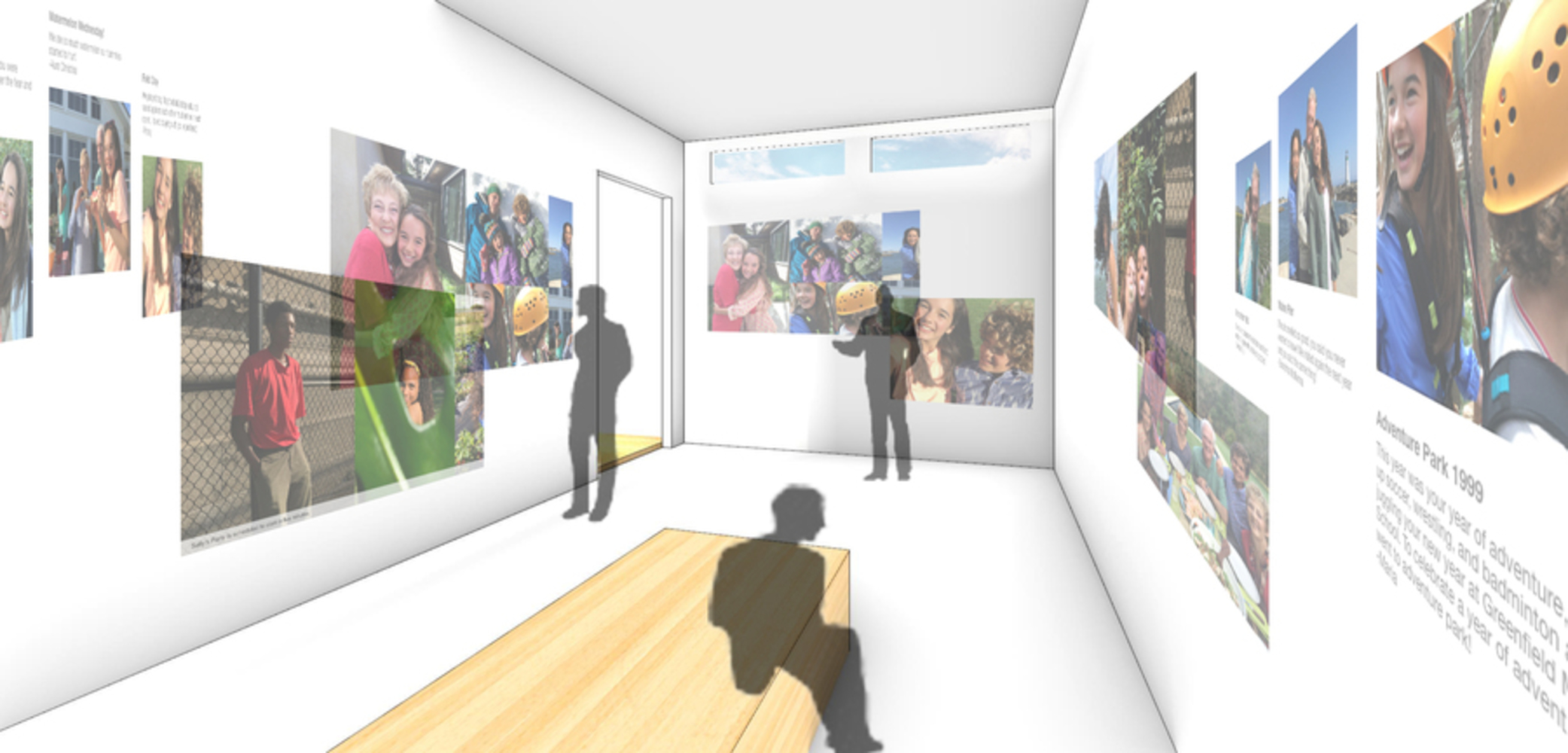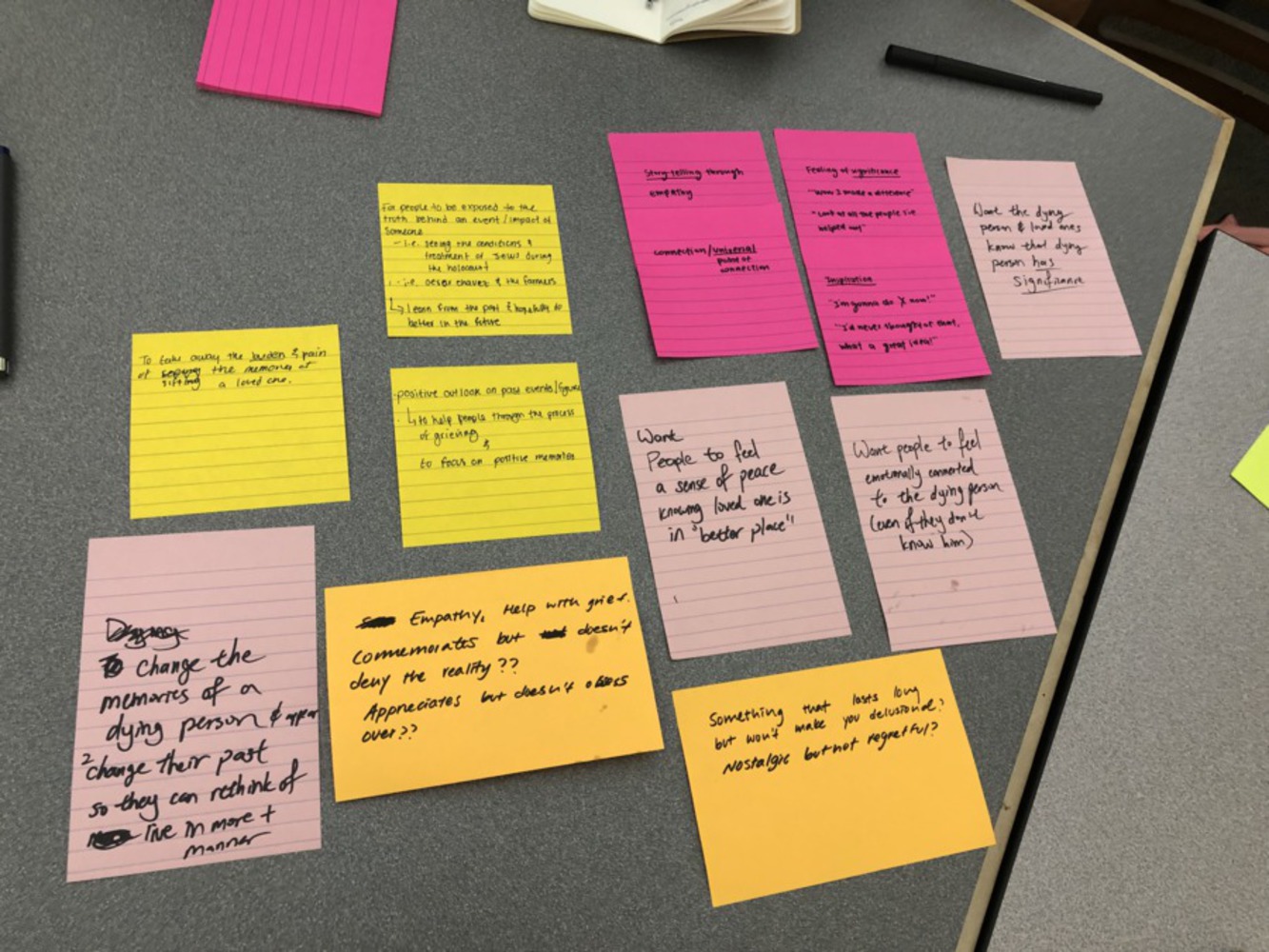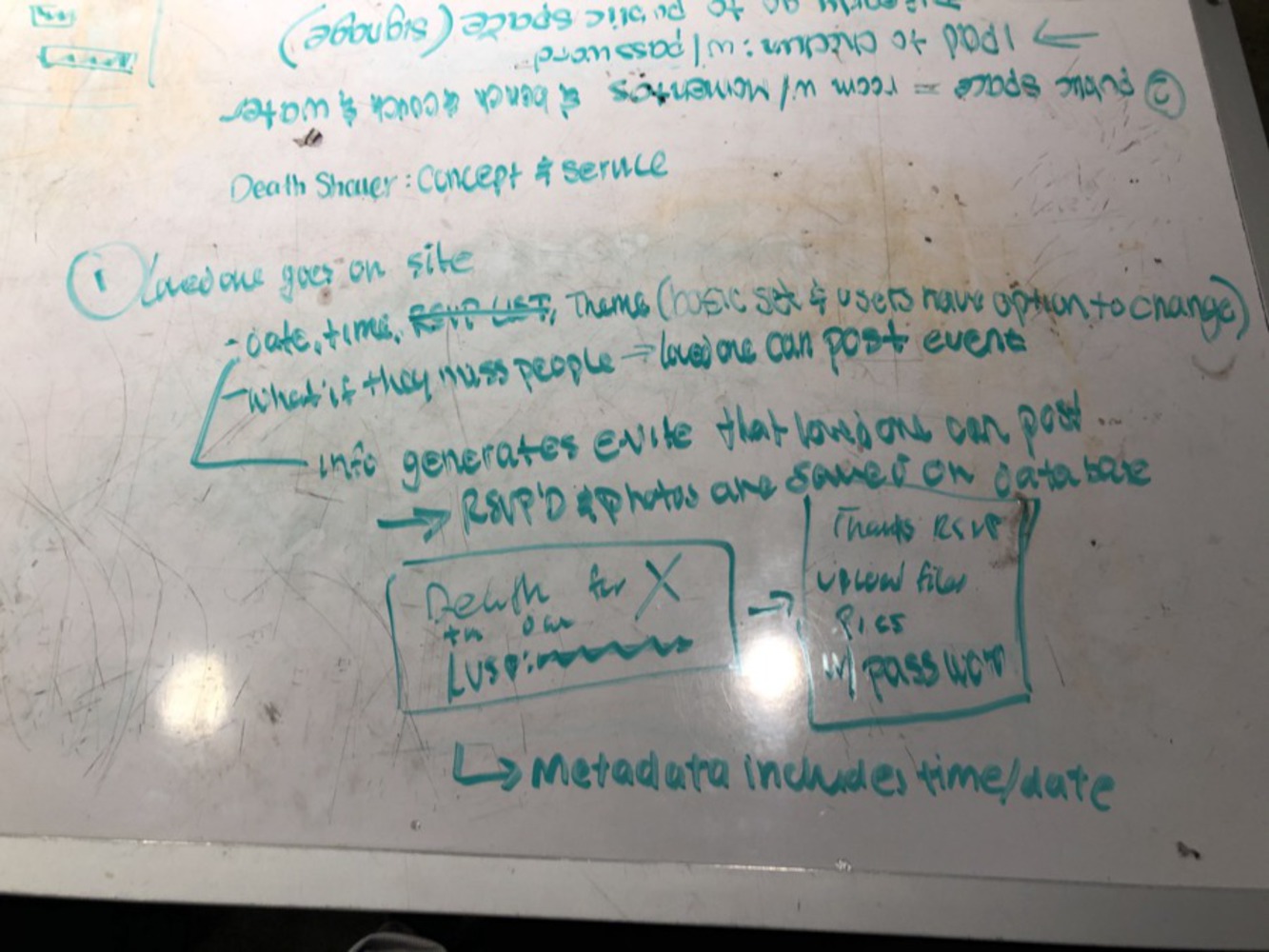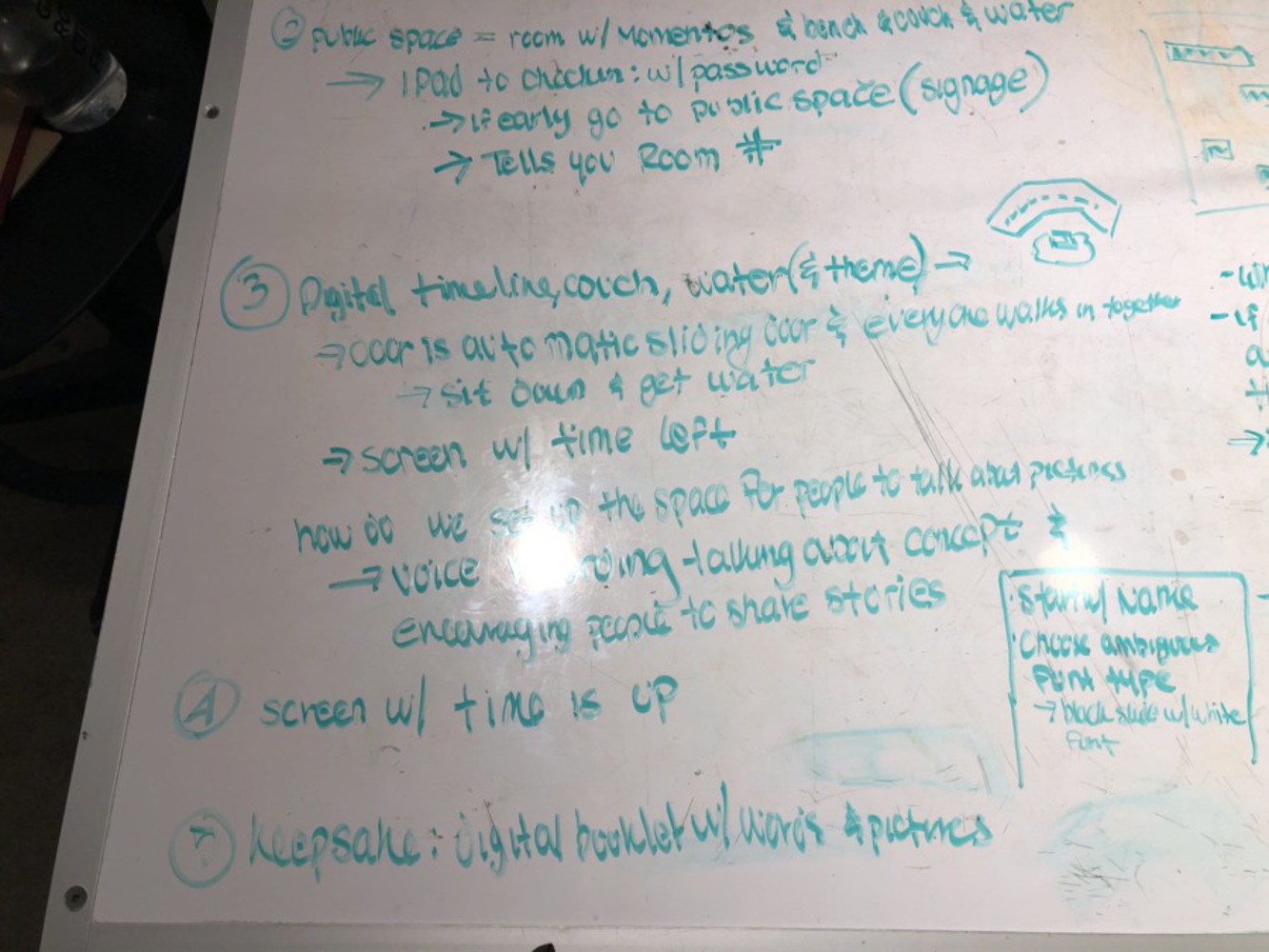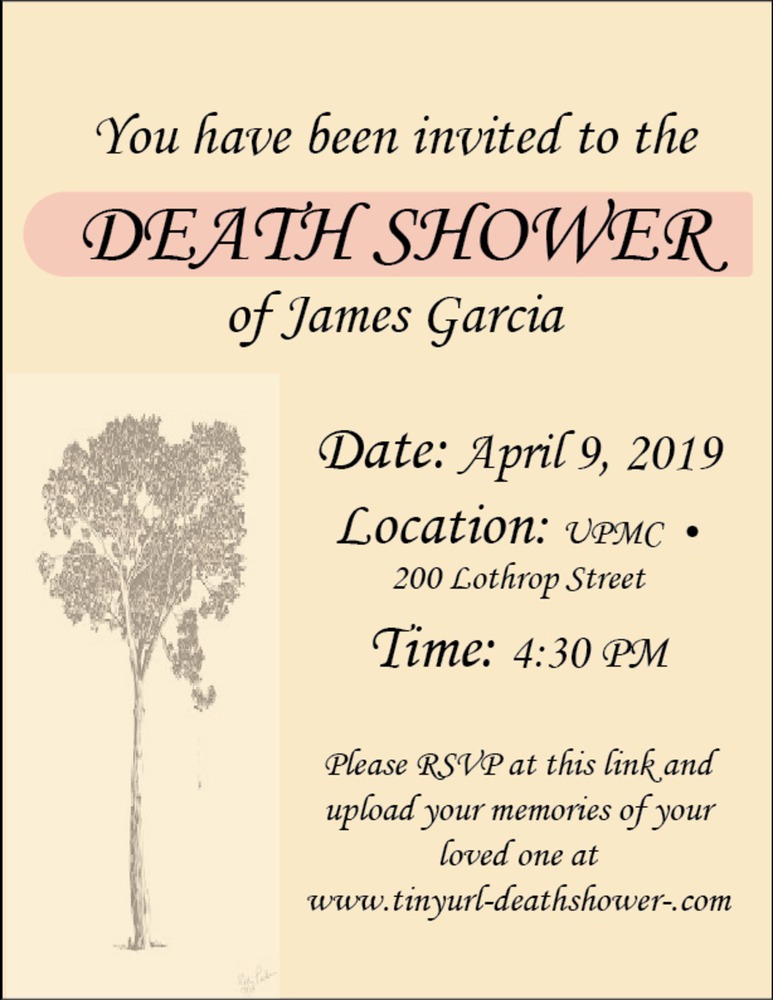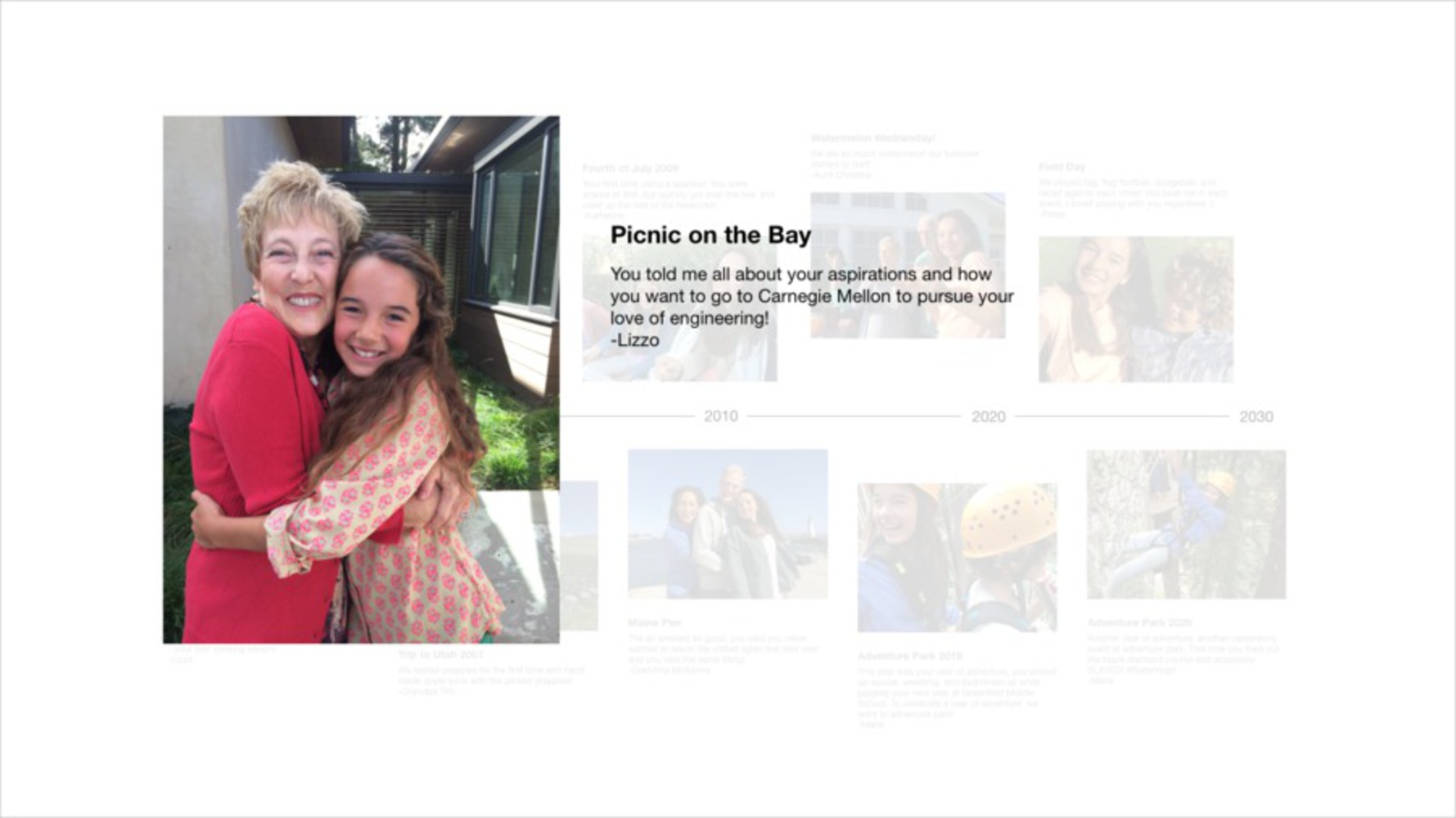Proposal
The Death Shower gives a positive spin on death by providing a space to commemorate the life of a loved one who is soon to pass. This area of gathering allows those in celebration to privately skim through past shared experiences, publicly share stories they would like to pass on, and interact in a natural space dedicated to the afterlife. A private room featuring a digitally rendered timeline allows friends and family members to fully realize the significance of the loved one’s life and revisit shared experiences altogether. Key moments can be pulled from the timeline to a public momento created to help pass on stories and legacies to future visitors. Through empathy and a restated hope for the future, the Death Shower flips the dark narrative surrounding the topic of death to instead recognize a fruitful chapter coming to a close. The Death Shower is a direct response to growing concerns surrounding spatial and environment hazards imposed by traditional cemeteries. The communal space allows visitors to lessen their environmental impact and create a sense of community through the universal language of life and death. Through this experience, the goal is not only for the dying individual to feel more significant and loved, but also give solace to the loved ones' friends and families that the loved one is leaving the world feeling loved.
